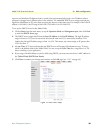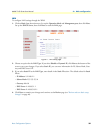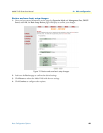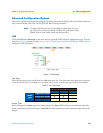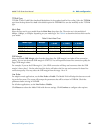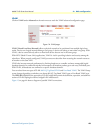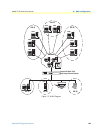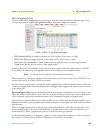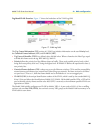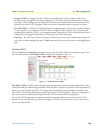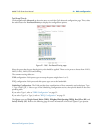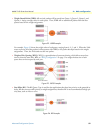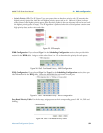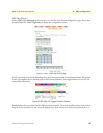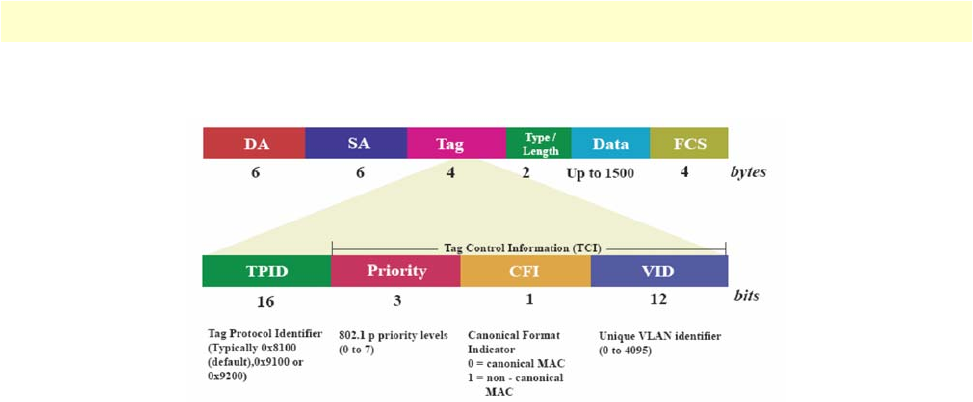
Advanced Configuration Options 46
Model 2160 Series User Manual 4 • Web configuration
Tag-Based VLAN Overview. Figure 17 shows the breakdown of the VLAN tag field.
Figure 17. VLAN tag field
The Tag Control Information (TCI) section of a VLAN tag includes information on the user Priority level,
the Canonical Format Indicator (CFI) and VLAN ID (VID).
• Tag Protocol Identifier (TPID) is a defined value of 8100 in hex. When a frame has the EtherType equal
to 8100, this frame carries the tag IEEE 802.1Q / 802.1P.
• Priority defines the priority level for different classes of traffic. There are 8 possible priority levels, with 0
being the lowest priority level and 7 being the highest level. IEEE 802.1P defines the operation for these 3
user priority bits.
• Canonical Format Indicator (CFI) is always set to zero for Ethernet switches. CFI is used for compatibility
reasons between an Ethernet-type network and Token Ring-type network. If a frame received at an Ether-
net port has a CFI set to 1, then that frame should not be forwarded as it is to an untagged port.
• VLAN ID (VID) is the unique identification number of the VLAN, which is used by the standard 802.1Q.
It has 12 bits and allows the identification of 4096 (212) VLANs. Of the 4096 possible VIDs, a VID of 0 is
used to identify priority frames and the value 4095 (FFF) is reserved, so the maximum possible VLAN con-
figurations are 4,094.
The Model 2160 initially configures one VLAN by default, VID=1. A port such as LAN1–4, line or sniffing
can have only one Port VID (PVID), but can have as many VID groups as the Model 2160 has memory in its
VLAN table to store them.



